1597 impressions Peter Rajsingh and 18 others like it on LinkedIn
Rennu Dhindsa, Sabina Himani and 50 others like it on Facebook
747 views on Instagram – 28 Likes
Read comments below the story and do share your thoughts!
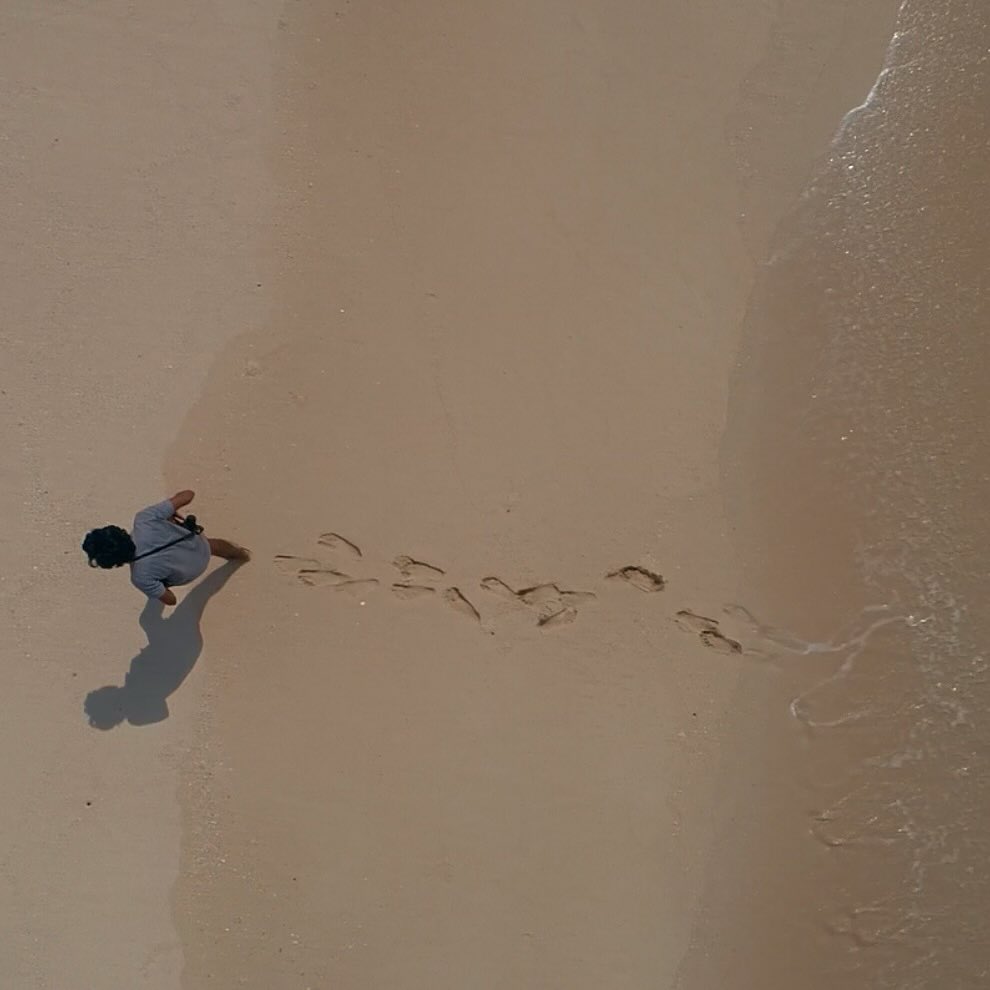
Turtle Walker – A Love Story for Our Times
In a world where people are pulled into the pressure cooker of life, trying to accomplish too many things – and too many things of no consequence – Turtle Walker is a small gem of a movie which takes you on one man’s very focused journey of relentlessly following and documenting a dying breed of sea turtles in India, to ensure their future is safeguarded.
The man’s name was Satish Bhaskar and in the late 70’s, this marine biologist single-mindedly navigated remote and uninhabited islands, pursuing his passion to trace the Indian Ocean’s mysterious sea turtles. It was indeed a lonely journey of many thousands of steps, of many years spent in isolation for a little-known cause which not too many people cared about.
It was on one such survey of the Andaman Islands in 1988 that he discovered the ancient leatherback turtles – and this was the first proof of their existence in India. Yet, the sacrifices he had to make were many. On his very first survey in 1977, Bhaskar got stranded on an uninhabited island for several months. It was just the sea and himself for many days until one of the S.O.S letters he sent out in bottles finally reached his wife and he was rescued. And yet, he returned year after year to the sea turtles.
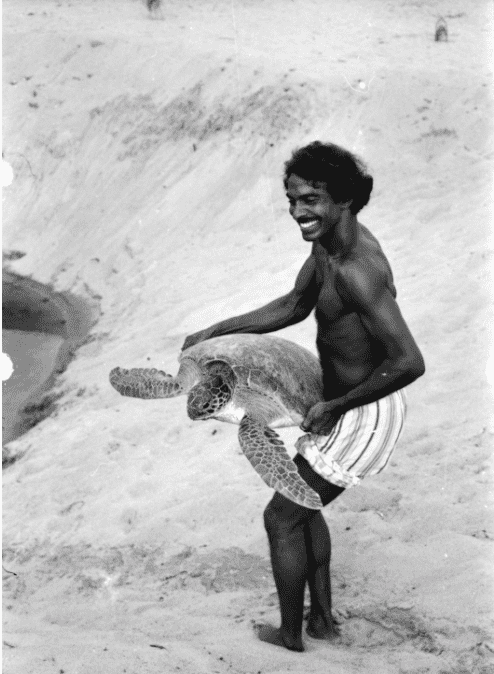
A few years later, in 2004, the devastating Indian Ocean tsunami wiped-out entire beaches where sea turtles had nested. Although he was now in his 70’ s, he set out on a final journey to the South Reef which had become hard to access due to the debris. He jumped into the ocean and swam to the island, and found that the turtles, the nests, even the turtle tracks had all disappeared. Yet the story has a happy ending as Adhith Swaminathan, a young researcher and his team continued Bhaskar’s work. Their decade’s long research has shown the nesting beaches are slowly reforming and the leatherbacks are returning to nest in the same numbers as before.
There is another love story here – that of debut filmmaker Taira Malaney who heard about this little known Turtle Walker in the Andaman Islands where she lived and determined to tell his story to the world.
It took her seven years to make the film, starting from scratch with few resources. Yet by the end of it all, the little debut feature film had won acclaim internationally, including the Grand Teton Award, known as the Oscars of nature and conservation filmmaking. The film also won the “Best Natural History and Wildlife Pitch” at Sunny Side of the Doc, 2019, the “Emerging Filmmaker Award (India), and “Griffith Film School Residency Award (Australia)” at DocEdge Kolkata, 2018.
Noted filmmakers Zoya Akhtar and Reema Kagti had come in as producers with Tiger Baby, a production house founded by them, addressing social issues. They joined Taira Malaney’s Emaho Films which has produced several award-winning short films, including A Living Legacy (2017) and The Call Of Pashmina (2018).
As Turtle Walker wins its way through different cities and nations, it will definitely create awareness among the young people and a desire not only to safeguard the sea turtle, but also other wildlife which is facing extinction. It is a hopeful message at a time when the world needs it most.
Besides creating awareness, there is going to be an entire education outreach curriculum with FIRKI, which is the teacher component of Teach for India, so it works with all the teachers training, and building a curriculum with them. Says Taira Malaney, “ We’re going to be leveraging this film in a series of shorter impact films to use art to educate and hope to inspire the next generation of turtle walkers and marine conservatists.”
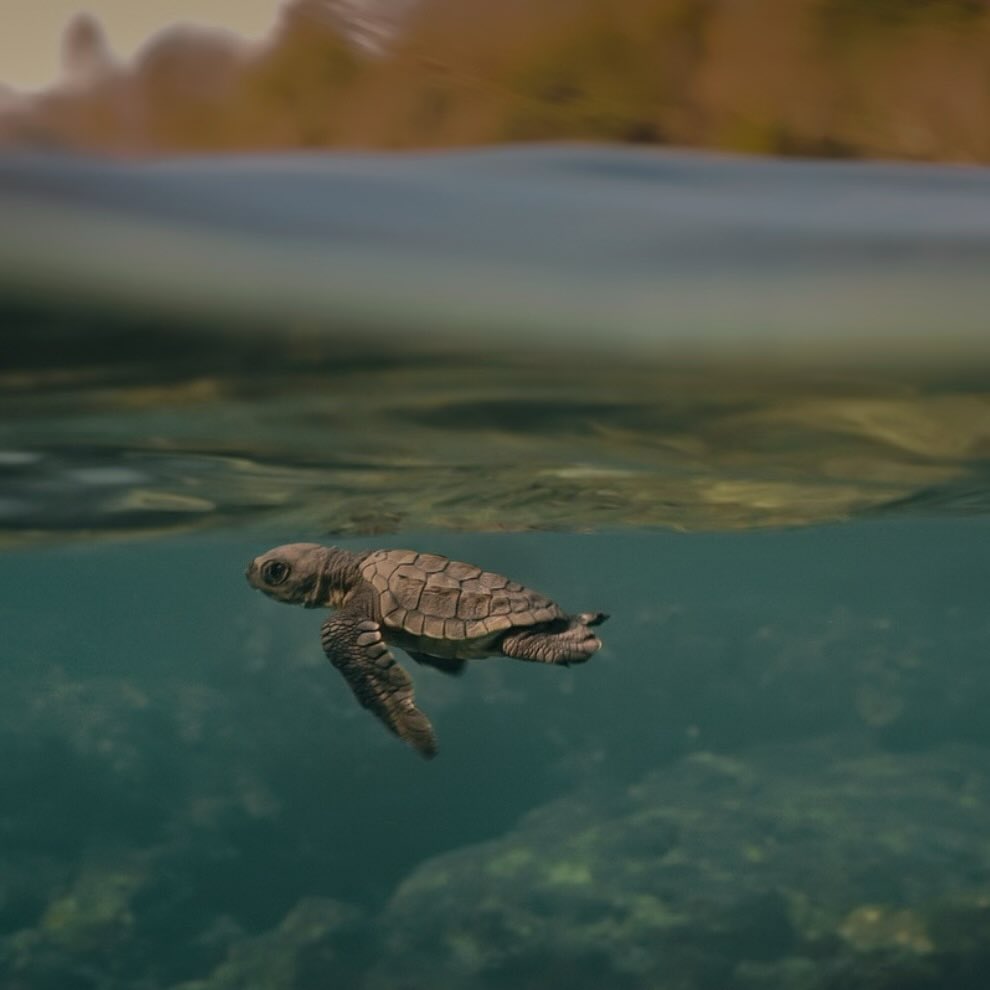
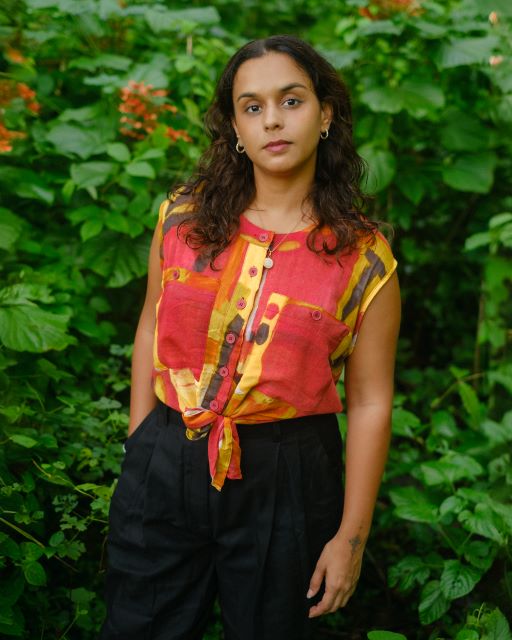
Turtle Walker
Face to Face with Taira Malaney
The Making of a Debut Feature Film
I met Taira Malaney at a screening and talk at The Explorer’s Club in Manhattan. The audience of veteran travelers and explorers was completely blown away by the film. Her film recently had its world premiere at Doc NYC.
Here is Taira Malaney’s brief exclusive Q and A with Lassi with Lavina
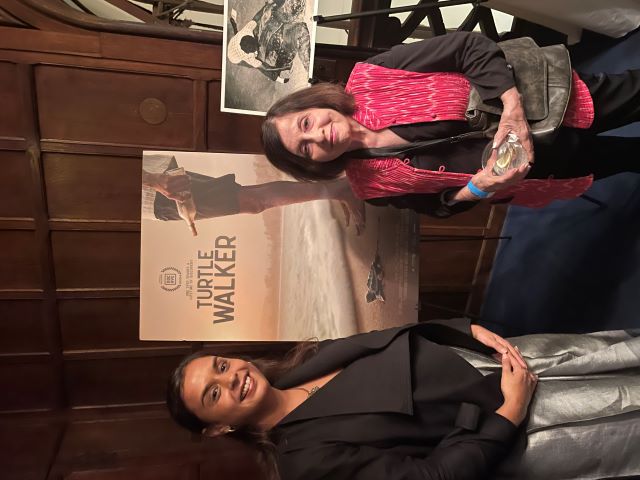
1.How did you decide to make this film?
I was living in the Andaman and Nicobar Islands. I had just finished college, was very lost, didn’t know what I wanted to do. I had spent five years building towards a career in psychology, but just came back to India and decided that was not for me.
Through the writings of Rom Whitaker, I became aware of Satish Bhaskar’s adventures where he had marooned himself on islands, got chased by elephants and had near-death experiences living alone with sea turtles. And I just was so inspired, because I couldn’t believe what it took for a person to do something like this. Like, why would you put yourself on an island for nine months alone?
I decided to find him, and he ended up being the most difficult person to track down! You know, in true sea turtle style, he took it on and was as elusive as the sea turtles themselves. When I found him finally – he turned out to be living just an hour away, living a quiet life with his wife Brenda.
2. I was curious about the place you called home – Andaman Nicobar islands. Do you think that location influenced your choice of subject or were the issues of the natural world and sustainability already important to you?
I lived in the Andaman Nicobar Islands for one year, during which I learnt about Satish’s story. I think it definitely influenced my choice of subject. I worked with a program that introduced the local village youth to marine studies and conservation through various activities involving art, storytelling, and film. I was really surprised to learn that while these children lived on the edge of some of the most beautiful dive sites on the islands, most of them didn’t know how to swim and were actually quite afraid of the ocean. I found myself asking how I could help foster a more positive relationship between our Indian youth and the marine world. When I saw their response to films about the marine world, I knew it could be a really powerful medium to achieve this goal.
I was already interested in stories that explored our relationship with the natural world. Prior to Turtle Walker, I made two short films on the subject called A Living Legacy and The Call of Pashmina. Human behavior and emotion has fascinated me since I was a child; in college I studied developmental psychology and focused on empathy in youth.
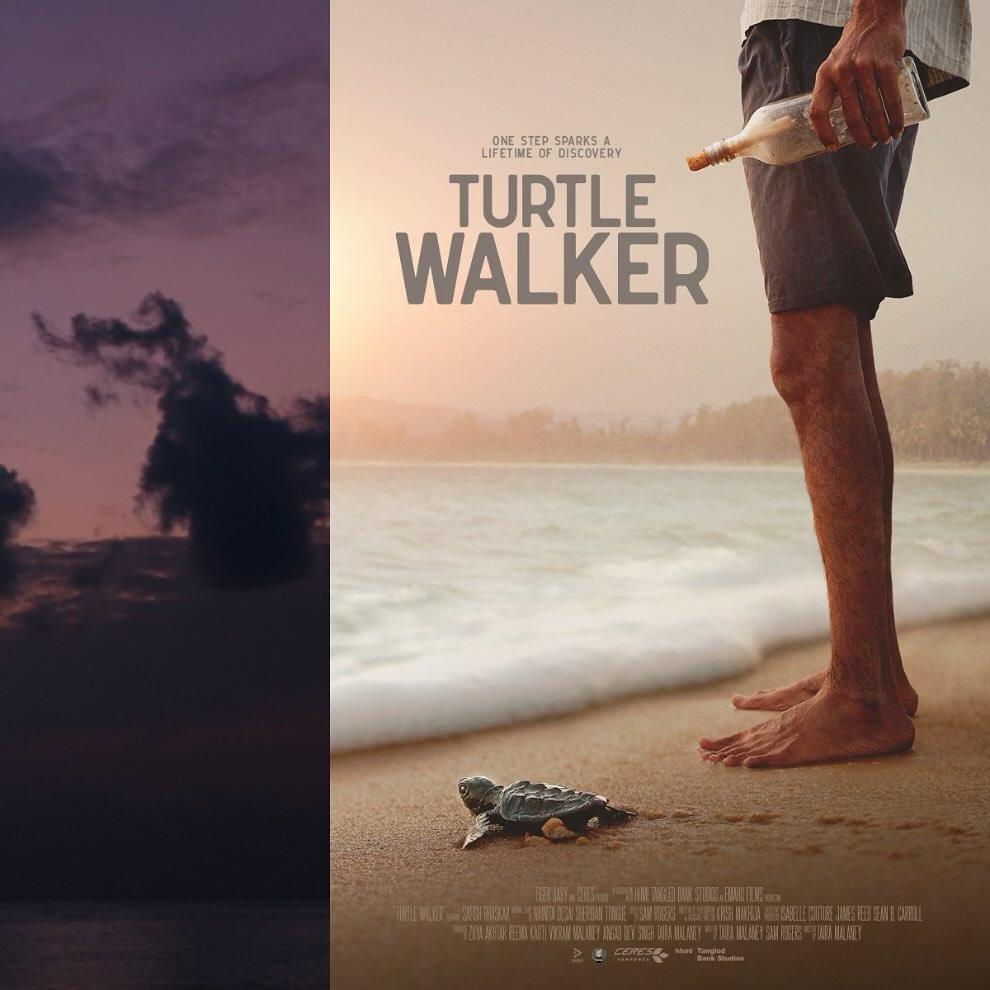
3. As a new filmmaker, what was the most difficult part of building the layers of the film and what were the challenges you faced?
Being my first feature film, I wore many hats. Every part of the process was full of challenges and learning opportunities. I think the most difficult aspect was sticking to the story and treatment I envisioned. The film’s subject did not fit into programming slots, and with the unusual recreational treatment, coupled with the fact that I had no previous filmmaking experience to show, it was very difficult to sell my vision. We basically got turned down by everyone we pitched to. But with support of our team at Emaho Films, my parents, and the various pitching forums we attended, we gradually found mentors, EPs, co -producers, and eventually put together an experienced and talented team of editors, sound designers, and musicians who all helped me bring my vision to life.
4.Tell me about your relationship with Natalie Cash of the Wildlife Conservation Society and the Explorer’s Club.
I met Natalie at the Jackson Wild summit in 2019. I was part of the Media Lab at Jackson Wild that year, and I believe she was one of the mentors at the lab. We kept in touch; she advised us on developing our impact campaign. Natalie is one of those mentors who really took me under her wing, and found opportunities to help me learn, grow, and build a network in the wildlife film industry. She invited me to speak on a panel about our impact campaign at Jackson Wild the following year. She also connected us to collaborators for the impact campaign, such as WCS India. They partnered with us on the first phase of the impact campaign, to support our research and development towards designation of a new MPA in India. Natalie later nominated me to be a part of the Explorers Club 50 cohort in 2023. It has created so many great opportunities for collaboration, funding and networking in the exploration and conservation fields across the world.
5. As an emerging film-maker starting out on a debut film, could you tell me about the difficulties, until you got the noted names and their support? Did you have to do a lot of canvassing or did the subject and your treatment of it sell the project to those who could make it a reality?
The unusual treatment and the fact that it was my first feature doc really did not help us to sell the film. That was where the pitching forums and conferences – Docedge Kolkata, Sunny Side of the Doc, Jackson Wild, and NEWF Congress came in. These provided us with opportunities to find mentorship, develop the story and build relationships that we needed to drive the project forward. If it wasn’t for the fact that we were able to fund the first part of production, and cut a teaser of the film, I don’t think this film would not exist today. With the teaser, we were able to show a proof of concept that the treatment could work, and our first co-producers came on board. After that, we were able to put together a team of individuals to assemble a rough cut, and things came together from there.
6. When does the film go to India? Do you think it will have an impact on the younger generation in India and across the globe?
We are working on distribution at the moment, and India is naturally one of the main markets we are looking at. The story is so universal, and initial responses to screenings in the US have been really positive. However, given that it is a story of conservation success rooted in India, one that showcases the immense natural beauty of our coasts and islands, there is a certain pride and joy that an Indian audience seems to feel when they watch it. I think it will definitely have an impact on the youth in India. We have outreach and impact plans to introduce the film alongside a marine studies curriculum and look forward to measuring the impact it has in schools across the country.
